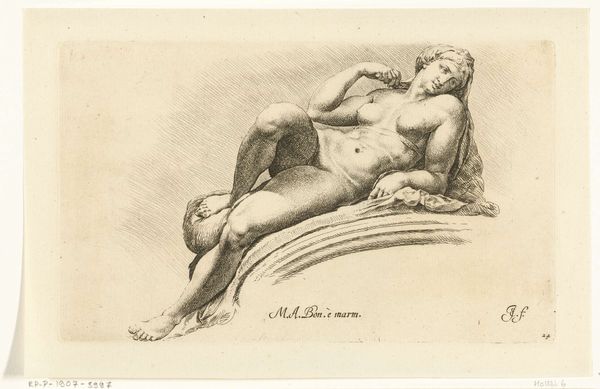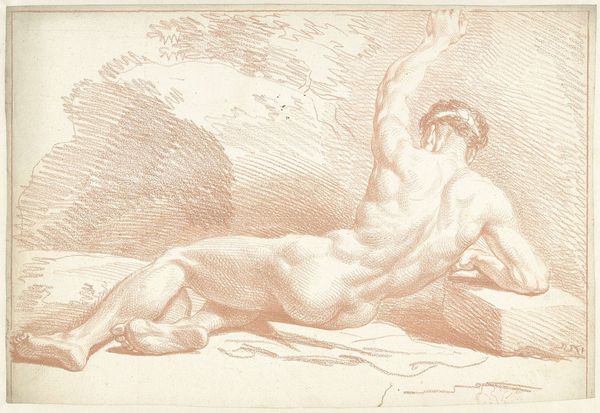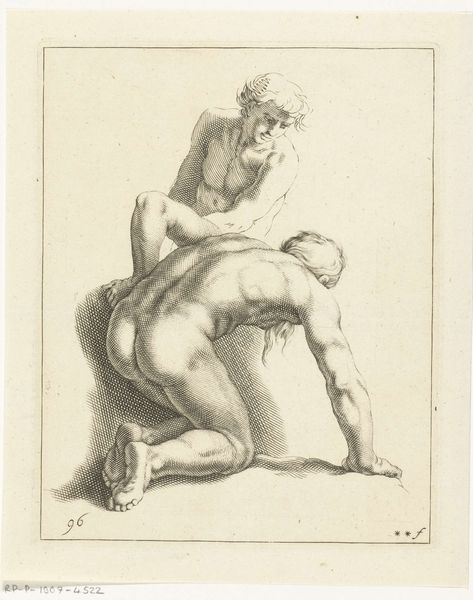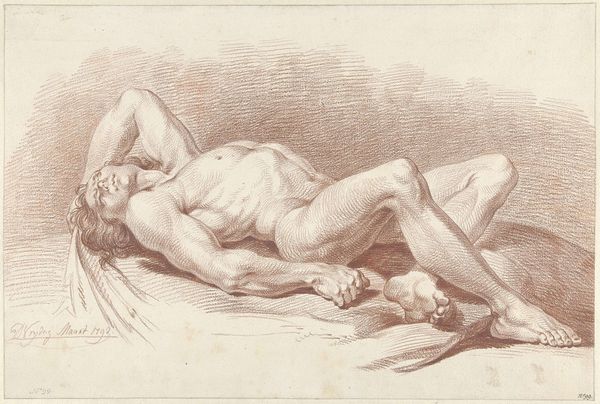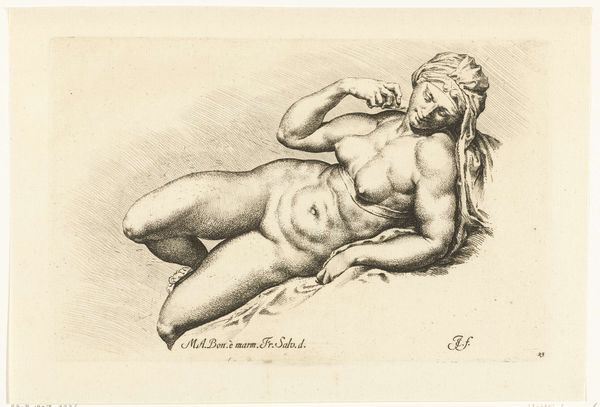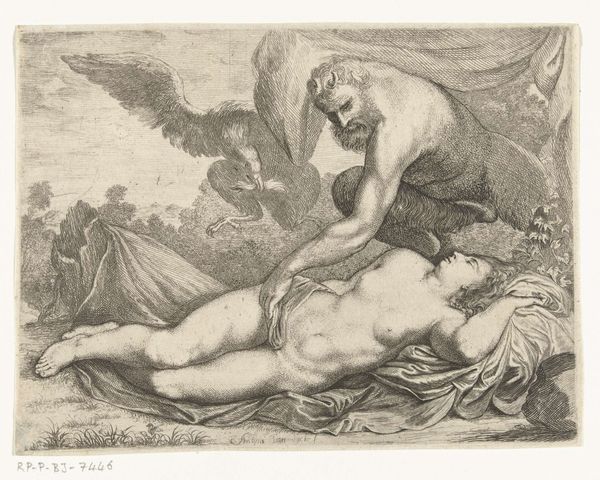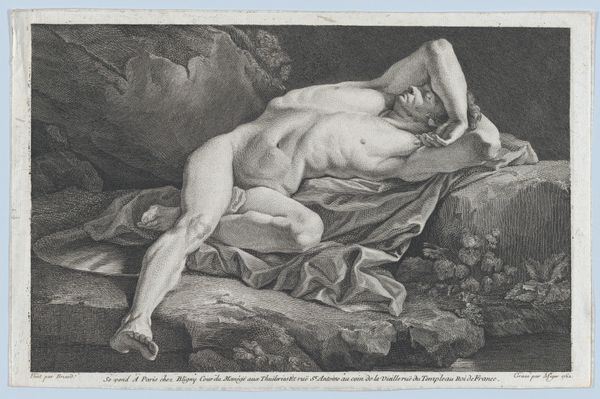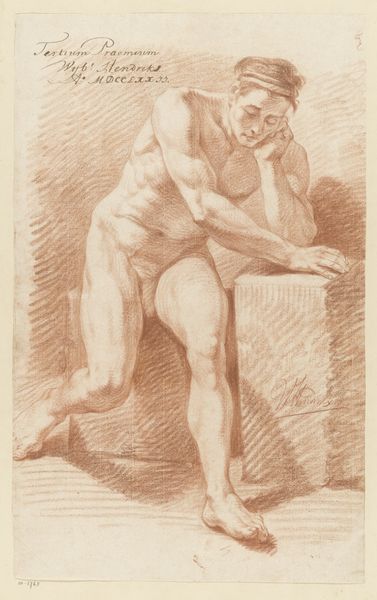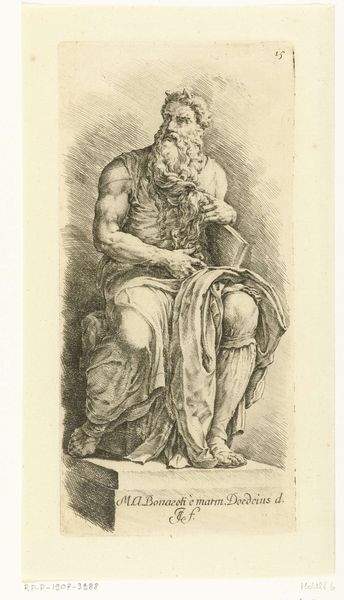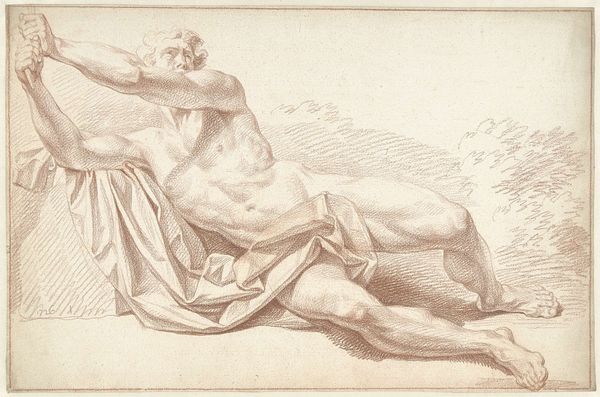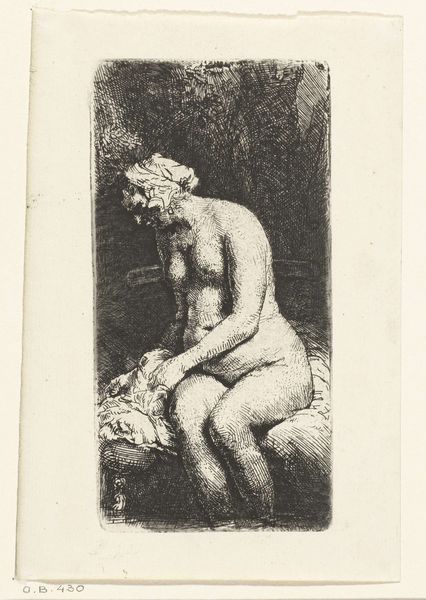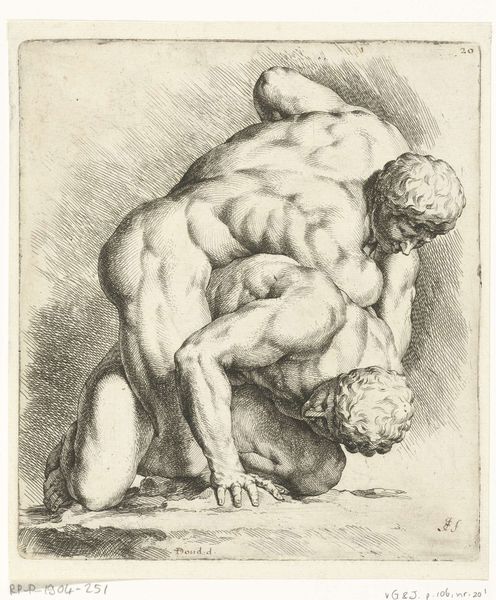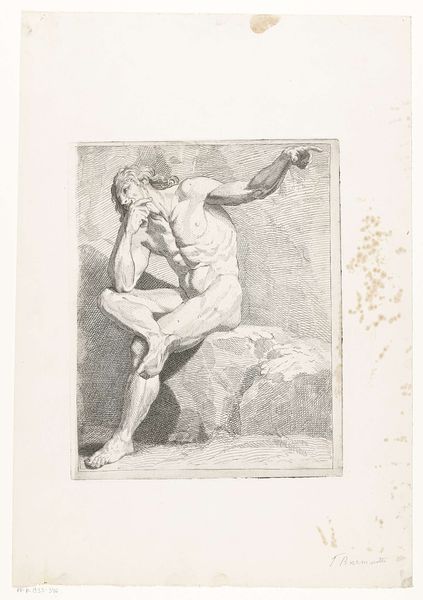
drawing, ink
#
drawing
#
baroque
#
ink
#
nude
Dimensions: height 128 mm, width 233 mm
Copyright: Rijks Museum: Open Domain
Curator: Let’s consider this rather curious piece entitled "Nacht liggend op een stenen boog", or "Night Reclining on a Stone Arch", created between 1668 and 1671 by Jan de Bisschop. It's currently housed in the Rijksmuseum. What strikes you most when you look at it? Editor: Melancholy, definitely melancholy. This muscular nude seems weighed down by thought, or perhaps just deeply, deeply bored. It feels less like a celebration of the human form and more like a portrait of existential ennui. Curator: Interesting. The figure is clearly referencing classical statuary. This positioning on a stone arch is intriguing. You notice that the "Night" reclines not merely on the stone, but also against a sculpted mask. There's even a tiny owl at her feet. Each of these details possesses symbolic meaning, embedding layers of understanding beneath the initial impression. Editor: So, what’s with the mask? Some kind of patriarchal burden? And why is she babysitting an owl? She doesn’t look thrilled. Curator: The mask could represent the weight of history, or the suppressed voices of the past upon which she leans. The owl is traditionally associated with wisdom, but more crucially with nocturnal activity and hidden knowledge. Perhaps "Night" isn't burdened but contemplating, in touch with insight only darkness can offer. The very rendering—done with ink, in a Baroque style—suggests an unveiling of profound depths beneath a deceptively simple surface. Editor: I suppose that melancholy can stem from deep contemplation. There’s something vulnerable and exposed in this very studied pose that hits a chord, even now. The darkness and thoughtfulness really permeate this ink drawing. Curator: And this piece provides another layer. Remember the tradition and practice of studying the human form and that such ink drawings were vital and instructive for artists to study, in turn shaping their work. Editor: Very true! That perspective adds so much. Okay, Jan de Bisschop, you got me thinking after all!
Comments
No comments
Be the first to comment and join the conversation on the ultimate creative platform.
